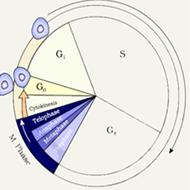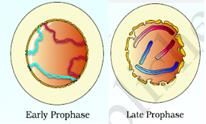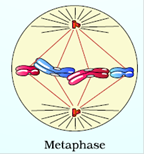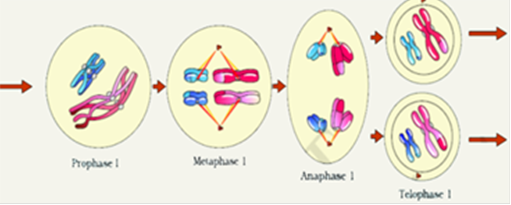
myCBSEguide App
Download the app to get CBSE Sample Papers 2023-24, NCERT Solutions (Revised), Most Important Questions, Previous Year Question Bank, Mock Tests, and Detailed Notes.
Install NowCBSE Biology Chapter 10 Cell Cycle and Cell Division class 11 Notes Biology in PDF are available for free download in myCBSEguide mobile app. The best app for CBSE students now provides Cell Cycle and Cell Division class 11 Notes Biology latest chapter wise notes for quick preparation of CBSE exams and school based annual examinations. Class 11 Biology notes on Chapter 10 Cell Cycle and Cell Division class 11 Notes Biology are also available for download in CBSE Guide website.
CBSE Guide Cell Cycle and Cell Division class 11 Notes
CBSE guide notes are the comprehensive notes which covers the latest syllabus of CBSE and NCERT. It includes all the topics given in NCERT class 11 Biology text book. Users can download CBSE guide quick revision notes from myCBSEguide mobile app and my CBSE guide website.
Cell Cycle and Cell Division class 11 Notes Biology
Download CBSE class 11th revision notes for Chapter 10 Cell Cycle and Cell Division class 11 Notes Biology in PDF format for free. Download revision notes for Cell Cycle and Cell Division class 11 Notes Biology and score high in exams. These are the Cell Cycle and Cell Division class 11 Notes Biology prepared by team of expert teachers. The revision notes help you revise the whole chapter in minutes. Revising notes in exam days is on of the best tips recommended by teachers during exam days.
Download Revision Notes as PDF
CBSE Quick Revision Notes
CBSE Class-11 Biology
CHAPTER-10
CELL CYCLE AND CELL DIVISION
- The sequence of events by which a cell duplicates its genome, synthesizes the other constituents of cells and eventually divides into two daughter cells is called cell cycle.
- DNA synthesis occurs in one specific stage of cell division but distribution of chromosome in cells occurs in complex series of events during cell division.
Phases of Cell cycle
Human cell divides once in approximately 24 hours, which may vary in different organisms. In yeasts it takes about 90 minutes to complete the cell division process.
Cell cycle is divided into two basic phases-

- Interphase– it is the phase between two successive M phases. Interphase lasts for 95% of a cell cycle. This phase is called as resting phase but during this period the cells prepare itself for nuclear division by cell growth.
- M Phase– when the actual cell division or mitosis occurs. It starts with karyokinesis (nuclear division) or duplication of chromosome and end with cytokinesis or division of cell matrix (cytoplasm division).The interphase is divided into three further phases:
- G1 phase represents the interval between mitosis and initiation of DNA replication. Cell is continuously active and grows in size.

- During synthesis phase, replication or synthesis of DNA takes place and amount of DNA get doubles per cell.
- During G2 phase protein is synthesized in preparation for mitosis.
- In adult animals, some cells do not divide or may divide occasionally. These cells do not divide further and exits the G1 phase to enter an inactive stage called Quiescent Stage (G0) of cell cycle.
- In animals mitotic division is present in only somatic diploid cells but in plants it is seen in both haploid and diploid cells.
- Mitosis cell division is also known as equational division because the numbers of chromosome remain same in parental and progeny cells.

- Prophase is the first phase of mitosis followed by G2 phase. It involves following events-
- Initiation of condensation of chromosomal materials.
- Movement of centrioles towards opposite poles of the cell.
- At the end of prophase, endoplasmic reticulum, nuclear membrane, Golgi complex disappears.

- Metaphase starts with complete disappearance of nuclear membrane. The most suitable stage for study of morphology of chromosomes. It involves
- Condensation of chromosomal materials in to compact and distinct chromosomes made up of two sister chromatids attached with spindle fibres with kinetochores.
- Chromosomes arrange at centre of cell called metaphase plate.

- Anaphase involves following steps:
- Splitting of each chromosome at centromere into two sister chromatids.
- Two chromatids start moving towards opposite poles.

- Telophase is the last stage of mitosis which involves
- Chromosomes reach at opposite poles and loose its identity as discrete unit.
- Nuclear membrane reassembles around the chromosome clusters.
- Nucleolus, Golgi complex and ER reappear.

- Cytokinesis is the division of cytoplasm of a cell after karyokinesis (division of chromosome) into two daughter cells. In animal cells, appearance of furrows in plasma membrane that deepens gradually and joins to divide cytoplasm into two parts.
- In plant cells, wall formation starts at the centre and grows outwards to meet lateral walls. The formation of cell wall begins with formation of cell plate.
Significance of Mitosis
- Mitosis produces diploid daughter cells with identical genetic complement.
- It helps in repair of cells, especially in lining of gut and blood cells.
- Meristematic division in apical and lateral cambium results in continuous growth of plants.
Meiosis- The cell division that reduces the number of chromosome into half and results in the production of haploid daughter cells is called meiosis. It helps in production of haploid phase in the life cycle of sexually reproducing organism. It involves following events.
- Two sequential cycles of nuclear and cell division called meiosis I and meiosis II but single cycle of DNA replication.
- It involves pairing of homologous chromosome and recombination of them.
- Four haploid cells are formed at the end of meiosis II.
| Meiosis I | Meiosis II |
| Prophase I | Prophase II |
| Metaphase I | Metaphase II |
| Anaphase I | Anaphase II |
| Telophase I | Telophase II |

- During Leptotene, the chromosome becomes distinct and visible under microscope. Compaction of chromosome continues throughout the leptotene phase.
- During Zygotene stage, chromosomes start pairing together (synapsis). The paired chromosomes are called homologous chromosome. Synaptonemal complex formed by a pair of homologous chromosome is called bivalent or a tetrad.
- During Pachytene stage, crossing over between non-sister chromatids of homologous chromosome occurs for exchange of genetic materials. The crossing over is enzyme –mediated process which involves enzyme recombinase.
- Diplotene is recognized by dissolution of synaptonemal complex and tendency to separation of bivalent except at the site of crossing over. This forms an X like structure called chiasmata.
- Diakenesis is marked by terminalisation of chiasmata. The nuclear membrane breaks and nucleolus disappear.
- In metaphase I the bivalent chromosome align at equatorial plate and microtubules from the opposite poles of the spindle get attached to the pair of homologous chromosomes.
- Anaphase I – homologous chromosome separate but sister chromatids remain attached at centromere.

- During Telophase I, nuclear membrane and nucleolus reappears and cytokinesis follows. This is called as diad of the cells.
- The stage between two meiotic divisions is called interkinesis and it is short lived that follows Prophase II.
Meiosis II
- It is initiated immediately after cytokinesis before chromosome gets elongated.
- In prophase II, nuclear membrane disappears and chromosome becomes compact.
- At metaphase II stage, the chromosomes align at equator and microtubules attach with kinetochores of sister chromatids.
- Anaphase II start with splitting of centromere of each chromosome to move towards opposite poles.

- Meiosis ends with Telophase II in which two groups of chromosomes get enclosed by nuclear membrane followed by cytokinesis to form tetrad of cells (four haploid daughter cells).
Significance of meiosis–
- Meiosis forms the gametes that are essential for sexual reproduction.
- Crossing over introduces new recombination of traits.
- Helps in maintenance of chromosome number of sexually reproducing organism.
- Provides evidence of basic relationship of organisms.
Difference between Mitosis and meiosis
| Mitosis | Meiosis |
|
|
Cell Cycle and Cell Division class 11 Notes
- CBSE Revision notes (PDF Download) Free
- CBSE Revision notes for Class 11 Biology PDF
- CBSE Revision notes Class 11 Biology – CBSE
- CBSE Revisions notes and Key Points Class 11 Biology
- Summary of the NCERT books all chapters in Biology class 11
- Short notes for CBSE class 11th Biology
- Key notes and chapter summary of Biology class 11
- Quick revision notes for CBSE exams
CBSE Class-11 Revision Notes and Key Points
Cell Cycle and Cell Division class 11 Notes Biology. CBSE quick revision note for class-11 Mathematics, Physics, Chemistry, Biology and other subject are very helpful to revise the whole syllabus during exam days. The revision notes covers all important formulas and concepts given in the chapter. Even if you wish to have an overview of a chapter, quick revision notes are here to do if for you. These notes will certainly save your time during stressful exam days.
- Revision Notes for class-11 Physics
- Revision Notes for class-11 Chemistry
- Revision Notes for class-11 Mathematics
- Revision Notes for class-11 Biology
- Revision Notes for class-11 Accountancy
- Revision Notes for class-11 Economics
- Revision Notes for class-11 Business Studies
- Revision Notes for class-11 Computer Science
- Revision Notes for class-11 Informatics Practices
- Revision Notes for class-11 Geography
To download Cell Cycle and Cell Division class 11 Notes, sample paper for class 11 Chemistry, Physics, Biology, History, Political Science, Economics, Geography, Computer Science, Home Science, Accountancy, Business Studies and Home Science; do check myCBSEguide app or website. myCBSEguide provides sample papers with solution, test papers for chapter-wise practice, NCERT solutions, NCERT Exemplar solutions, quick revision notes for ready reference, CBSE guess papers and CBSE important question papers. Sample Paper all are made available through the best app for CBSE students and myCBSEguide website.
- The Living World class 11 Notes Biology
- Biological Classification class 11 Notes Biology
- Plant Kingdom class 11 Notes Biology
- Animal Kingdom class 11 Notes Biology
- Morphology of Flowering Plants class 11 Notes Biology
- Anatomy of Flowering Plants class 11 Notes Biology
- Structural Organisation in Animals class 11 Notes Biology
- Cell Structure and Functions class 11 Notes Biology
- Biomolecules class 11 Notes Biology
- Cell Cycle and Cell Division class 11 Notes Biology
- Transport in Plants class 11 Notes Biology
- Mineral Nutrition class 11 Notes Biology
- Photosynthesis in higher plants class 11 Notes Biology
- Respiration in Plants class 11 Notes Biology
- Plant Growth and Development class 11 Notes Biology
- Digestion And Absorption class 11 Notes Biology
- Breathing and Exchange of Gases class 11 Notes Biology
- Body Fluids And Circulation class 11 Notes Biology
- Excretory Products and their Elimination class 11 Notes Biology
- Locomotion and Movement class 11 Notes Biology
- Neural Control and Coordination class 11 Notes Biology
- Chemical Coordination and Integration class 11 Notes Biology
- Cell Structure and Functions class 11 Notes Biology

Test Generator
Create question paper PDF and online tests with your own name & logo in minutes.
Create Now
myCBSEguide
Question Bank, Mock Tests, Exam Papers, NCERT Solutions, Sample Papers, Notes
Install Now
Helpful note’s
Very helpful and understanding notes…easy to grasp
thanks.
Very helpful for neet revision practice
This platform is very nice . And this platform provide to very good notes.
Very helpful ?